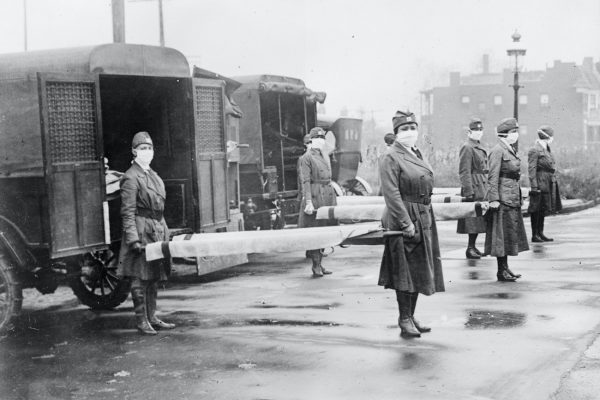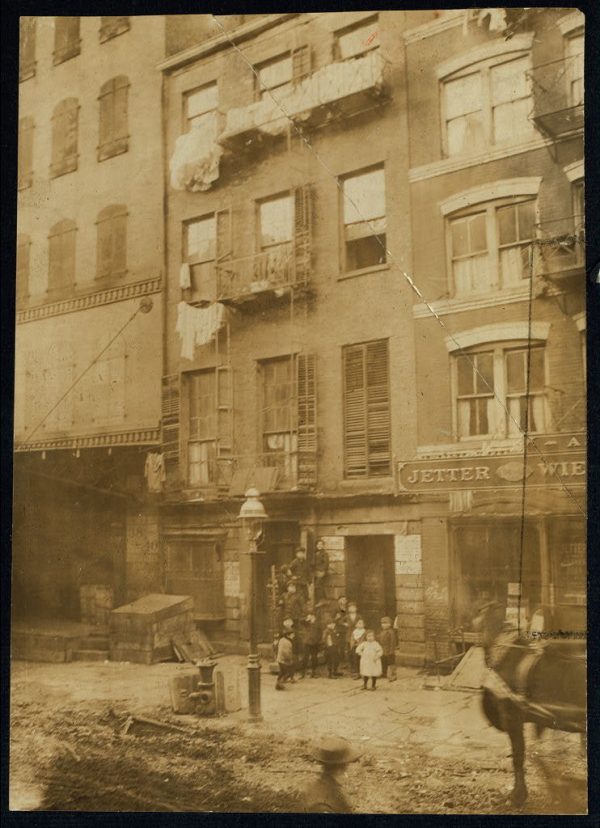Most years, we release two sets of mini-stories, but this year our team is larger than ever and, well, we simply have more stories to tell! For our third installment, 99% Invisible producers talked with host Roman Mars about the health-related rise of radiators, one of the remotest monuments on the planet, and a history of musical games.
Radiant Point by Delaney Hall
Anyone who has lived somewhere with an old radiator has probably noticed their noise. They are notoriously loud, clanking and often very, very hot. There’s a reason for all that and it’s related to a pandemic — not the current one, but rather the flu pandemic of 1918 and 1919.
Dan Holohan grew up in the heating industry — his dad worked for a plumbing and heating wholesaler in Manhattan. His family runs a website called HeatingHelp.com and he also wrote a book titled The Lost Art of Steam Heat. Holohan became really interested in the history of steam heating in the United States and as he was researching the topic he kept coming across references to the “Fresh Air Movement.”

This movement was a health crusade that took off after the Civil War. Proponents of it thought that stale, uncirculated air was bad for your health. They called it “vitiated air” (or: spoiled air). “People didn’t bathe regularly,” explains Holohan — “there were a lot of candles, there was a lot of unventilated fireplaces. It’s dirty air and it’s coming off your body and it’s coming out of your mouth and you’re smoking.”

People at the time didn’t really understand the mechanism, but they were starting to realize that something was up with air. One of of the main proponents of the Fresh Air Movement was a man named Lewis Leeds who had been an inspector for Union Army field hospitals. He teamed up with Harriet Beecher Stowe — author of Uncle Tom’s Cabin — to create a kind of traveling roadshow. As the fresh air movement really took hold, it grew popular and building designers start adapting their buildings to bring in more fresh air, thanks in part to awareness-raising efforts around air circulation aided in part simply by windows.

Around this time in the 1910s, two things were happening concurrently: one was the flu pandemic, which of course was a devastating global pandemic that was killing hundreds of thousands of people — at the same time, steam heating was beginning to take off with systems being installed in buildings across the country. And health officials at the time were starting to push this idea that people needed to keep their windows open, even in the winter, to increase ventilation and minimize flu spread. Of course, for that to be tenable in the cold, occupants needed some rather oversized radiators. “They were saying that because of the fresh air movement, we have to start designing systems big enough that they can hit the building on the coldest day of the year with the wind blowing and the windows open,” explains Holohan.

Eventually, the pandemic ended. Then, in the 1920s, people began realizing that they didn’t need to keep their windows open because the flu was long gone, yet here they were, still stuck with these overactive heaters meant to warm cold, breezy apartments. As a result, a whole industry arose to retrofit these big, overpowering radiators. Among other things, companies began to develop radiator covers. Some people also painted their radiators with silver, which could reduce a radiator’s ability to radiate heat by around 20 percent.

Compared to the early 1900s, buildings now are basically hermetically sealed, self-contained spaces with active systems. There are many office buildings where you simply cannot open the windows — it’s not an option. That, naturally, has become an issue in the midst of the current pandemic. Perhaps in the future, designers will draw more lessons from the past and let office buildings breathe. Special thanks to Patrick Sisson who originally reported on this story in detail for Citylab.



Comments (12)
Share
I’m dying. That songsmith commercial and the creepy christmas tree song.
Also, how do we get ahold of Sean’s dice song-writing game? Can it be a prize for the next fund drive or something? I want it so bad.
Did you know story of the resurrected (or re-erected) Lenin statue located in the Fremont neighborhood of Seattle?
This podcast is awesome! I really enjoy the short stories… (a blue Yoda…What?!) I’ve discovered your podcast thanks to my english teacher and the transcript is so useful ;D .. so I have just one question.. You’ll publish the transcript also for this episode? Thank you and a huge bravo from italy!
Glad you enjoy the minis! The transcript is now available. =)
Sean’s mention of the dice game reminds me of a mechanic in the podcast Bombarded. It’s a DnD podcast where every member of the party is also a bars. The players are bandmates and roll dice for a song each episode. As the party goes further in the journey, more dice rolls are added to modify aspects of the song. It’s a really cool idea and the application is marvelous.
Loved this show disappointed the photos talked about in the show are not here.
An entire bust-in-the-middle-of-a-wasteland story without an Ozymandias reference? Someone needs a stern talking-to.
As usual, I love y’all’s work.
A comment: please be conscious of using “Soviet” and “Russian” interchangeably. The Soviet Union was compromised of many nations and ethnic groups. Unfortunately, because Russians were the powerful majority, many people’s identities and contributions are regularly erased.
Thanks for what you do.
Great show! Felt like Roman was back on his game this episode. He seemed a little checked out on the last one and I was worried. I have loved this podcast so so much. It is my go to when I need something interesting, need to unwind, need to avoid coronavirus news, and need something even the kids will enjoy in the car. The rest of my family listens too and we call each other about after particularly good episodes.
More fun with radiators: My office is in a building in NYC’s garment district, so the entire floor was at one time probably a big open space where clothes were made (some might say a sweatshop), but now it’s divided up into lots of offices of various sizes. I’m lucky that my company is in an office on the outside of the building, with a window, which means also with a radiator (I never knew before why it’s silver!) and because it was designed to heat a whole building it gets so f***ing hot in the winter. The windows technically do open but we’re not supposed to open them. It is one thing I haven’t missed about working from home this winter!
Thanks for the transcript. I couldn’t decipher “ Kitchen Sisters ” even at a slower speed! 8^D
It’s not germ theory that the “fresh air” movement was going after – it was carbon monoxide poisoning. Think about it – every source of light, every source of heat, sucked up oxygen and put out carbon dioxide and carbon monoxide. Fire places. Stoves. Gas lighting. Candles. Oil lamps. Every source of heat and light put off fumes and made things unhealthy.
Old homes were drafty because they had to be, for safety. You needed fresh air or your light and heat sources would kill you. You needed to be aware of carbon monoxide poisoning or those gas lamps would kill that baby. They were a huge improvement over candles, but could be deadly without ventilation.
Texas last week was a great example of why modern homes don’t work with burning heat sources. Too sealed off for their own good.